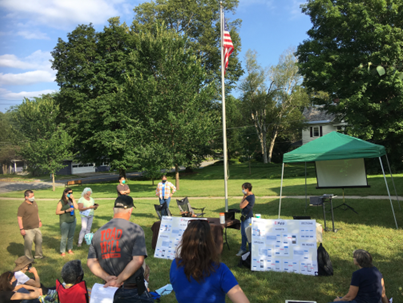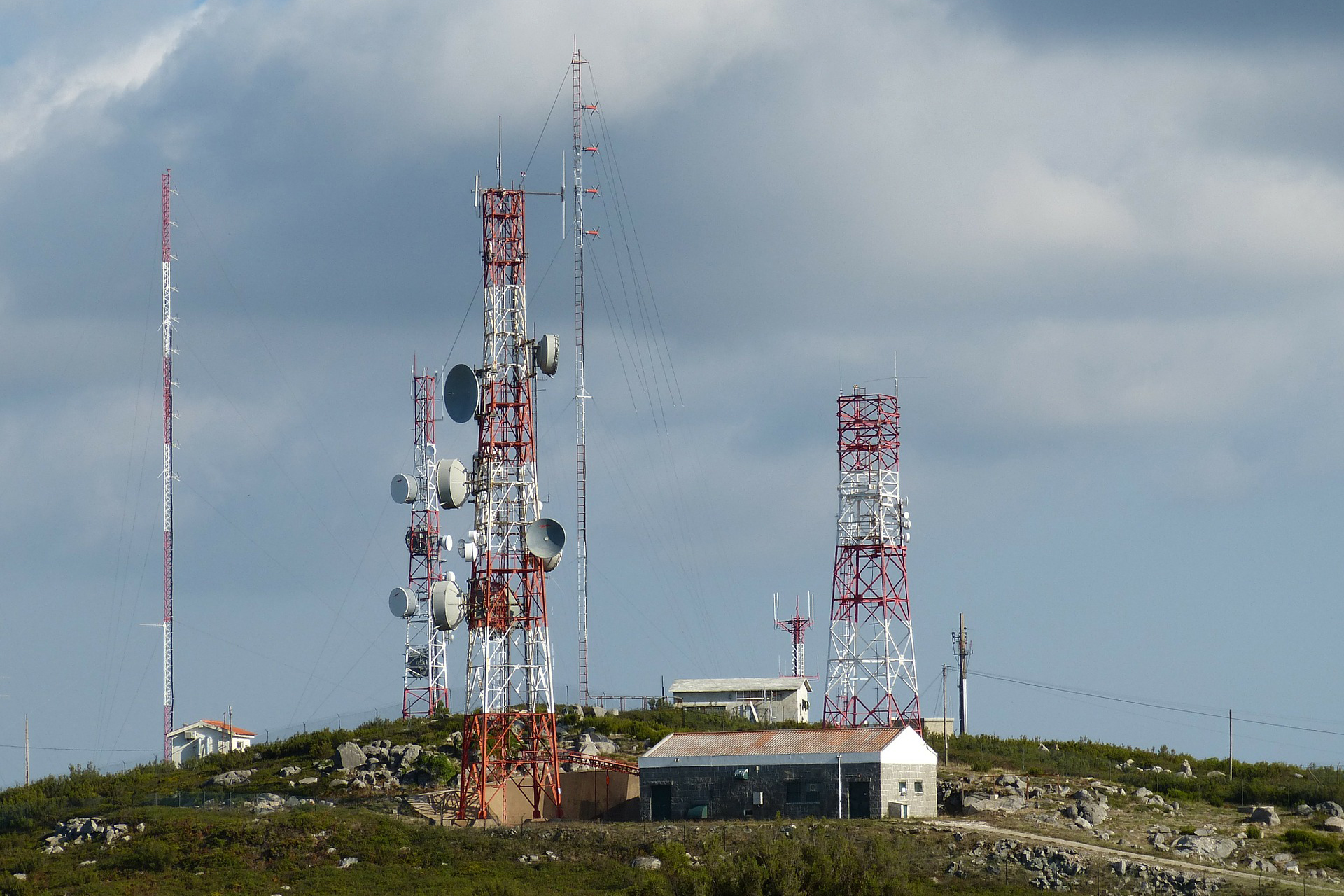Integrating Heterogeneous Wide-Area Networks and Advanced Data Science to Bridge the Digital Divide in Rural Emergency Preparedness and Response


The project SCC: Integrating heterogeneous wide-area networks and advanced data science to bridge the digital divide in rural emergency preparedness and response, funded by the National Science Foundation (award number: 1831547; amount awarded: $1,510,765.00) aims to develop, implement, and systematically analyze a comprehensive framework and a multi-layer platform for timely information collection, integration, exchange and dissemination to support emergency preparedness and response (EPR) in rural communities. The project brings about innovative research in network architectures and protocols that allow emergency responders and residents in rural areas to access emergency related information in areas where mobile broadband is scarce to non-existent.
Three primary activities have been conducted throughout the project.
First, the project has developed a heterogeneous network architecture and corresponding protocols that leverage wide-area wireless, WiFi and pocket-switching to provide (i) continuous communication to first responders and (ii) delay-tolerant information access to residents.
Second, the project has designed a smartphone app (the E!App) which supports the collection of information from different sources. Through the E!App, the project has been able to collect information about the mobility patterns of residents and network availability, which has enabled the development of a dynamic probabilistic community network model. In addition, novel graph-theoretic algorithms allow for the identification of information-depleted sub-communities and inform optimal information dissemination strategies.
Third, the project is assessing the adoption and use of the E!App by various community members to maximize the benefits associated with timely, rich and high-quality information, disseminated through mobile devices. In this respect, continuous community engagement activities have been conducted that have allowed for data provisioning, co-creation of the E!App, and evaluation of the adoption of the E!App and its related usefulness. Community engagement has been a key success factor throughout the project.
Transferability to the broader rural context will be assessed in the final year of the project by engaging two additional rural communities.
Scope of Work
NSF Award Abstract
This Smart and Connected Communities (SCC) project will conduct innovative research in network architectures and protocols to allow emergency responders in rural areas to use TV white space, WiFi and pocket-switching for communications in areas where mobile broadband are scarce to non-existent.
With this new knowledge, this project can develop and implement a framework for information exchange for emergency responders in rural communities.
This scientific research contribution thus supports NSF's mission to promote the progress of science and to advance our national welfare with benefits that contribute to the safety and social and economic revitalization of rural communities.
Generalizability of results is expected in relation to other rural contexts and policy domains (e.g., law enforcement and health).
Research components and key results will be incorporated in existing and new undergraduate and graduate courses, demonstrating the positive impact of interdisciplinary research and promoting the core disciplines to diverse groups of students.
The goal of this project is to develop, implement, and systematically analyze a comprehensive framework and a multi-layer platform for timely information collection, integration, exchange and dissemination to support EPR in rural communities.
This goal will be met through three primary activities.
First, the project will develop a heterogeneous network architecture and corresponding protocols that leverage wide-area wireless backhaul over TV white spaces, WiFi and pocket-switching to provide (i) continuous communication to first responders and (ii) delay-tolerant information access to residents.
In addition, the project will design a smartphone app which will support the collection of information from different sources and its exchange among first responders, government agencies and residents. Second, the mobility patterns and network availability collected will enable the development of a dynamic probabilistic community network model.
Novel graph-theoretic algorithms will identify information-depleted sub-communities and inform optimal information dissemination strategies.
Finally, the project will assess adoption and use of the technologies by various community members to maximize the benefits associated with timely, rich and high-quality information, disseminated through technological devices.
Continuous community engagement activities for data provisioning, app design, impact co-evaluation and path to sustainability of the project are key factors for success.
The framework will be co-designed and piloted in collaboration with the Town of Thurman, NY. Transferability to the broader rural context will be assessed by engaging two additional rural communities in coordination with Microsoft's Airband initiative.
Press Releases & News Stories
- Using Next-Gen Wireless Technology to Improve Emergency Response
- NSF Award Page
- NSF Award Announcement
Publications & Results
- Yuan, Q., Doke, K., Gasco-Hernandez, M., Gil-García, J. R., Zheleva, M., & Bogdanov, P. (2022, January). Understanding Drivers and Challenges of Multi-actor Collaborations at the Local Level. In Proceedings of the 54th Hawaii International Conference on System Sciences (pp. 2594-2603).
- Yuan, Q., Gulatee, Y., Gasco-Hernandez, M., Zheleva, M., Bogdanov, P., & Gil-Garcia, J. (2021, January). Understanding the determinants of adoption and use of information and communication technologies for emergency management: proposing a research agenda based on existing academic literature. In Proceedings of the 54th Hawaii International Conference on System Sciences (p. 2090).
- Gulatee, Y., Yuan, Q., Gasco-Hernandez, M., Gil-Garcia, J. R., Sutherland-Mitzner, M., & Pardo, T. A. (2020, September). Technology adoption for emergency preparedness and response in rural areas: Identifying the main determinants. In Proceedings of the 13th International Conference on Theory and Practice of Electronic Governance (pp. 469-476).
- Gulatee, Y., Gasco-Hernandez, M., & Gil-Garcia, J. R. (2020, June). Understanding Willingness to Share Information among Citizens and Public Organizations: The Case of Emergency Preparedness and Response. In The 21st Annual International Conference on Digital Government Research (pp. 205-213).
- Yuan, G., Gil-García, J. R., Sutherland-Mitzner, M. K., Gascó, M., & Pardo, T. (2020, January). Understanding the Role of Social, Technology, and Physical Infrastructures in Smart Communities: The Case of Rural Areas in the US. In Proceedings of the 54th Hawaii International Conference on System Sciences (pp. 1-10).
- Gasco-Hernandez, M., Zheleva, M., Bogdanov, P., & Ramon Gil-Garcia, J. (2019, June). Towards a socio-technical framework for bridging the digital divide in rural emergency preparedness and response: Integrating user adoption, heterogeneous wide-area networks, and advanced data science. In Proceedings of the 20th Annual International Conference on Digital Government Research (pp. 362-369).
- Doke, K., Affinnih, H. O., Yuan, Q., Gasco-Hernandez, M., Gil-Garcia, J. R., Bogdanov, P., & Zheleva, M. (2021, June). Improving Emergency Preparedness and Response in Rural Areas. In ACM SIGCAS Conference on Computing and Sustainable Societies (pp. 66-78).
- Doke, K., Yuan, Q., Gasco-Hernandez, M., Sutherland-Mitzer, M., Gil-Garcia, J. R., Bogdanov, P., & Zheleva, M. (2020). Supporting Resilience in Rural Emergency Preparedness and Response Through Improved Information Access. GetMobile: Mobile Computing and Communications, 24(2), 5-11.
Partners
- Town of Thurman, N.Y.
- Warren County Office of Emergency Services
- University at Albany College of Engineering and Applied Sciences - Department of Computer Science: Associate Professor Dr. Mariya Zheleva (PI), Associate Professor Dr. Petko Bogdanov (co-PI), Karyn Doke (PhD student), and Vaasu Taneja (undergraduate student)
-
CTG UAlbany: Research Director Dr. Mila Gasco Hernandez (Co-principal Investigator), Director Dr. J. Ramon Gil-Garcia (Co-principal Investigator), Dr. Aryamala Prasad (Researcher), Ms. Paula Hauser (Project Manager), Past members: Qianli Yuan (PhD student), Howard Chen (PhD student), Megan Sutherland (Project Manager), Alessandria Dey (Project Manager), Jordan Maher (Project Manager), Dr. Theresa Pardo (Senior Faculty Member)
Funding Sources
- National Science Foundation
